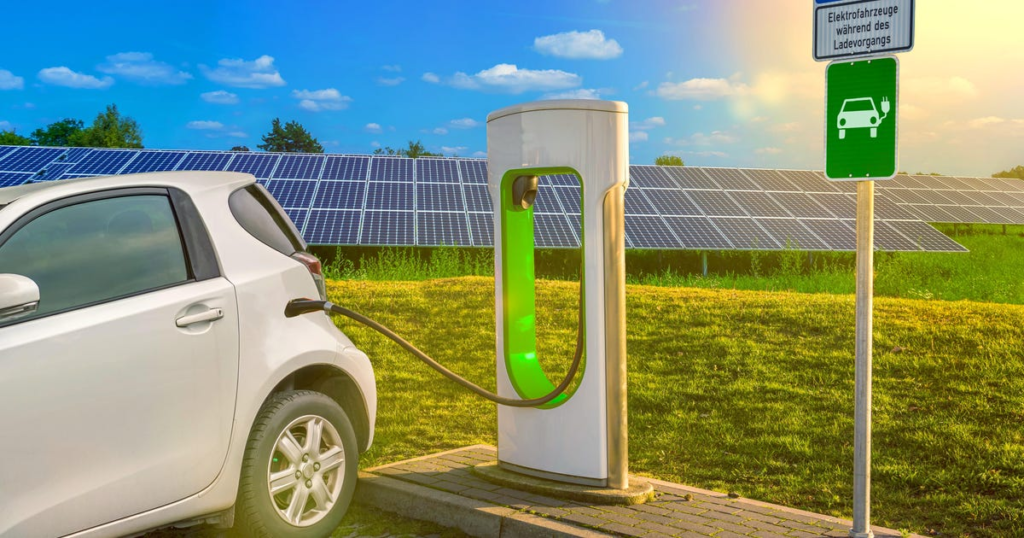Countries all over the world are facing challenges due to environmental sustainability issues and climatic effects. The higher consumption of fossil fuels is the main reason behind these challenges. That is why several industries in Canada and other countries have shifted their focus to renewable energy to reduce the negative impact of traditional energy sources. Adopting electric cars is the most important step for protecting the environment from adverse effects. It will reduce the emission of greenhouse gasses. EV manufacturers encourage the use of solar energy and other renewable energies to recharge batteries. So, let us talk about EVs and renewable energy.

Passenger EVs and the growth of the market
Some EVs are available as passenger vehicles, and they promote sustainability in the transportation industry. Electricity powers the car, and there is no tailpipe emission. So, EVs are eco-friendly and have undergone technological advancements. What’s more, you will find the environmental efficiency of the future electric cars. Besides, manufacturers are striving to increase the driving range. They aim to make the charging infrastructure more accessible.
The EV market has seen significant growth in the last few years. Government subsidies, incentives, and low operational costs are some reasons behind this growth. Moreover, automakers have invested in research activities to improve electric vehicle technology and boost battery performance. So, electric cars have become a highly appealing choice for most consumers.
The surge in the use of EVs has not just transformed the automotive sector. It has had a significant impact on the energy industry, especially solar energy.
EVs need electricity to recharge batteries, causing a spike in energy consumption. So, if there is a higher sale of EVs, the need for electricity will be on the rise. That is why solar energy has become the best alternative to provide power for running the EV. Solar power is highly affordable and sustainable.
EV and renewable energy: Renewable energy storage and electric cars
Some surveys revealed that private cars remain in idle mode for a significant period. Batteries in EVs store electricity. However, when they are not used for regular commuting, EV owners may sell or use the stored power. It brings them an opportunity to earn revenues.
What’s more, they can charge electric vehicles from renewable sources of energy. It allows maintenance of the grid stability with the storage of solar power during daytime and wind power at night. This trend will lead to the reduction of greenhouse gas emissions.
So, how do electric batteries store energy and provide the desired value?
Combining renewable energy (solar or wind) with EV charging stations brings a lot of benefits. It is an affordable way to make the optimal use of renewable energy. You can receive enough renewable energy to refuel your electric vehicle.
Storing renewable energy is vital. If not, EV owners need to consume the power directly or feed it into the public grid. These approaches will prevent the risk of loss of power.
Water tanks and thermal mass are major methods of solar energy storage using a solar space heating unit. Similarly, excess power can be used by wind turbines for air compression. It remains stored mainly in large underground caverns or aboveground tanks.
On the contrary, a solar inverter is highly useful for solar energy. Before the appliances have used the generated solar power, there is a need for converting DC into AC. The same thing happens when you fuel the EV with solar power. So, you will find an increase in the sale of solar inverters if more people adopt EVs. Inverters will also be available on a rental basis.
However, it is essential to connect the inverter to the charging port. Installing the charging port at the right place allows the transmission of electricity into the EV’s battery. You may look for charging port and solar inverter providers.
Considering solar charging solutions for electric vehicles
For EV owners and potential electric car buyers, solar charger integration has become a practical solution. They need to install solar panels on their premises to produce electricity. They can use the electricity to charge their electric cars. So, check the steps for setting up solar charging systems for electric cars.
Make an assessment and create a plan
The most important step is to evaluate energy usage in your household. It lets you determine the solar panel’s size needed to meet energy requirements for charging EVs. So, consult solar energy specialists to have the right information about the best solar energy system for your needs. They will make decisions based on your energy consumption level, location, and space for solar power panels.
Install and integrate solar panels
After making a plan, the most significant step is to install the solar panel. The experts will mount the solar panels in your room, install the inverter, and integrate it with your electric grid. To charge electric vehicles, solar-powered chargers need to have a direct connection to the system. You can charge your car with the solar energy produced by the panels.
Look for the available incentives
Implementing solar charging systems for your electric cars provides financial benefits. Some governments allow citizens to get incentives and tax credits. Incentives will help you reduce the investment cost. Your regular solar charging activities will be an affordable solution in the future.
Energy independence
As your solar panels can generate electricity on their own, it will result in energy independence. So, it will reduce your dependence on the electric grid and protect you from increasing energy costs. What’s more, battery storage systems integrated with solar systems ensure a reliable power source for your electric car. When there is low sunlight or you experience a power outage, you will benefit from it.
Conclusion
EV and renewable energy usage are the major factors toward developing a sustainable future. Integrating EVs with renewable energy systems is the most important step for creating an eco-friendly world. It shows a shift in the energy and transportation sectors, emphasizing a clean and efficient energy system.



